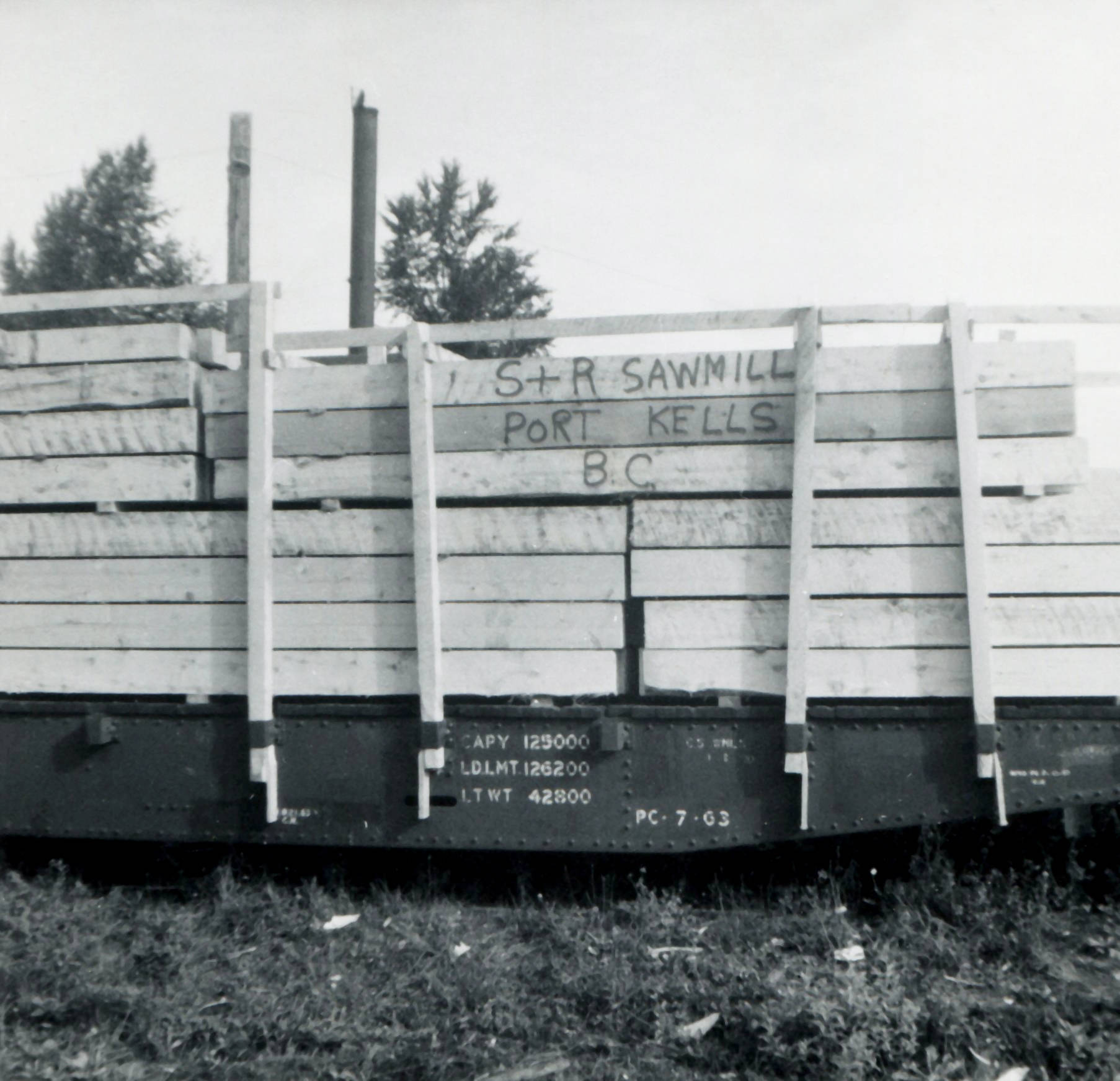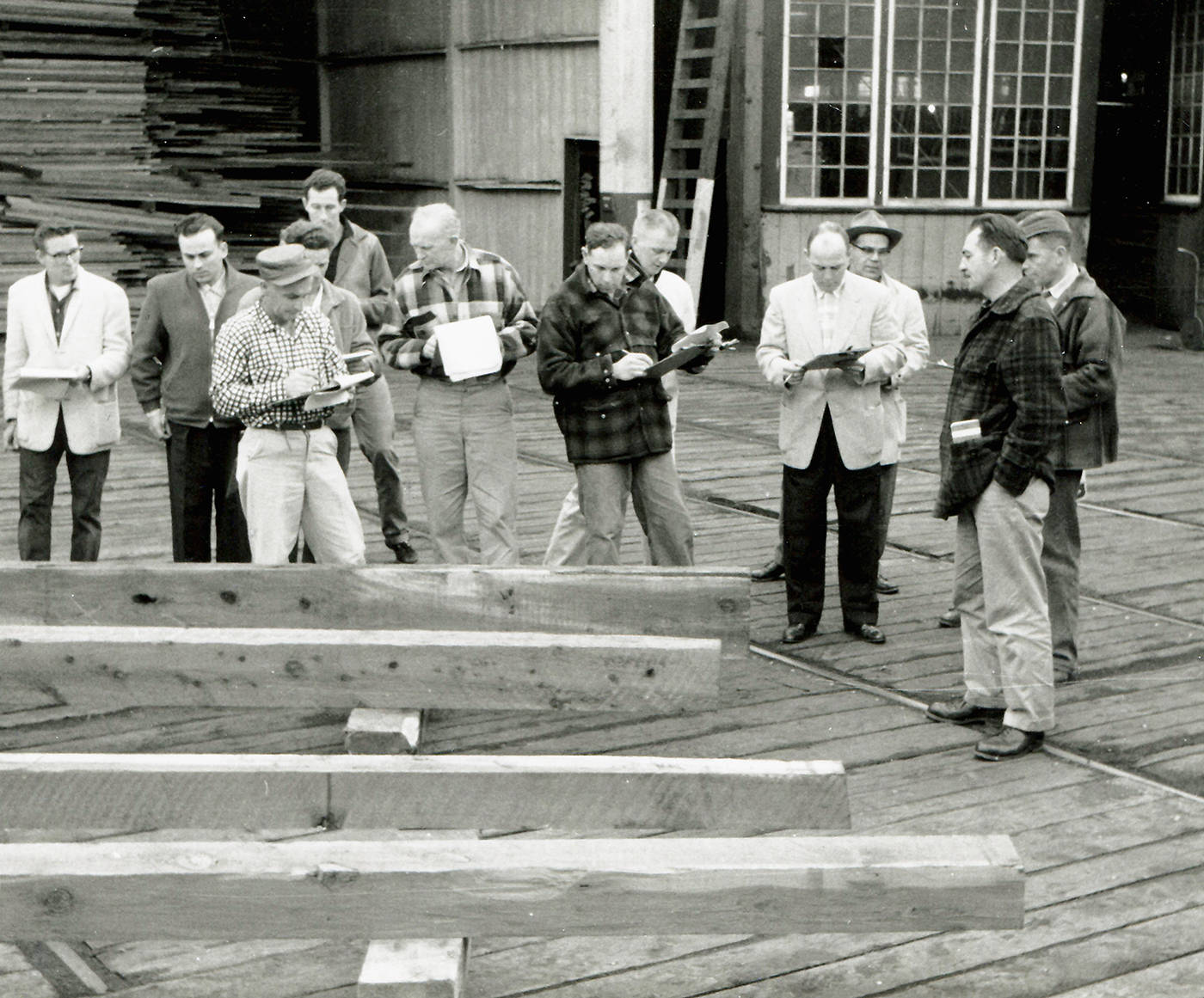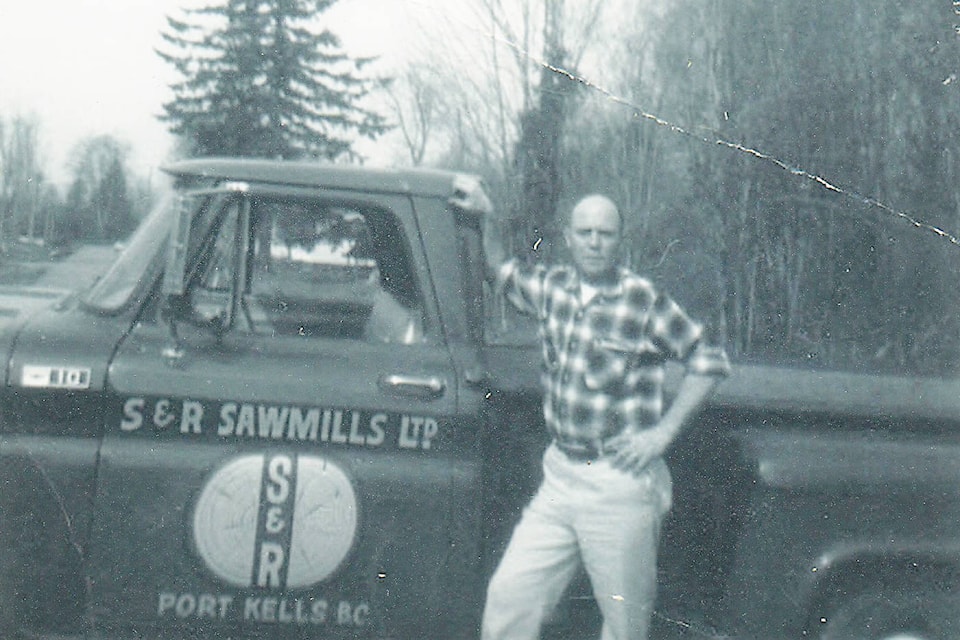Surrey resident Chick Stewart has co-written, with Michele Carter, a new memoir called It Can Be Done: An Ordinary Man’s Extraordinary Success (Harbour Publishing). In the following excerpt from the new autobiography, Stewart recalls the time he purchased his first sawmill – many years before he built and operated Northview Golf & Country Club and constructed Czorny Alzheimer Centre, both in Surrey.
Harold Morrison owned the sawmill in Port Kells, one of the mills I visited for Capilano Cedar Timber. He and his wife had an apartment above the office, so he lived and worked at the mill. He was about sixty years old and had been in the mill business for a long while when he told me he wanted to get out of it.
I looked at the mill, at Harold and at Emil, and the wheels in my head started turning. I had played with the idea of being my own boss, but didn’t really have a plan to buy a mill at that time, but I started thinking, “Maybe I should buy this one.”
My family had been poor. I saw no future if I had wanted to become a doctor or a lawyer because that would have meant being prepared to pay a large sum of money for my education. I decided to enter the sawmill business because it was all I knew from my teenage and working years and I wanted to earn my own future, and now I saw the opportunity to make a go of it.
The business would cost around $60,000 for two acres of land east of the mill and adjoining the Fraser River, as well as for the custom-cutting mill. Emil was the heart of the operation, so I knew we’d want to keep him on. I say we because I couldn’t do this alone.
I started considering who would make a good partner. I knew Vic Rempel was a really good sawyer and that together we just might do this. We were seventeen when we met at B.C. Manufacturing in New Westminster, which was where he still lived.
After Vic left B.C. Manufacturing, he’d started working in Nanaimo as a sawyer for MacMillan Bloedel. One day when he was visiting from Nanaimo, he came by to see me. I talked to him about Harold’s mill and he listened. I must have sounded pretty certain that we could do it because he kept nodding. We knew our strengths would work in our favour, and the more I talked with him, the more I felt it was the right way to go. The opportunity was in front of us, and we were healthy guys not afraid of work, so why not make a sound investment in ourselves that could pay off in a few years. Vic had a lot of confidence in me and wanted to give it a go, so he said, “Let’s do it, Chick.”
When the ink had dried on the deal, we had put down $15,000 cash. Interest on the balance of $45,000 was 6 percent per annum. We agreed on a clause that said, “In the event of severe weather conditions, which would curtail production, a monthly sum of $350 would be paid on balance.” The agreements were signed by mid- November. A new chapter of my life started in the fall of 1963 when I bought my first mill with Vic. Our last names were Stewart and Rempel, so we called it S & R Sawmills.
We were lucky with our employees. Emil was willing to stay on working for us, and the farmers were happy to get steady work, but we had to make improvements before we could get the mill going at full capacity. We didn’t have any electricity, so when it got dark in the winter around 4:00 p.m. we couldn’t run the mill. The short days were a big disadvantage because we only had one shift working, so profits would stay low. We would have to take out the steam engine and borrow some money to put in electricity. It was a shame to switch because that engine did run the mill well, but we would always need a ticketed steam engineer to run it, and we felt the steam was holding us back. We wanted to keep up with the times, so we shut down the mill and started the upgrade. After about three months, everything changed: steam was out, electricity was in and we were running two shifts on yellow cedar.
We decided to keep spending money to put in good machinery until we perfected our mill. We always kept our eyes open for equipment. We had a circular saw, but because of the design, the saw could cause a defect in the wood: one blade was on top of the other and the teeth could leave a mark in the wood where the two blades met, so we wanted to change from the circular to a band. Luckily, it didn’t take long to find a good used band saw. Everyone in the mill business gets a band saw after a while.
We asked our contact on Vancouver Island to keep his eyes open for the saw. Carl Reid was a used equipment dealer on the Island, and we’d already bought a couple of lumber carriers from him. Over lunch, we asked him to let us know if he happened to hear of a used gang saw coming available. Not long after our trip to the Island, Carl called and said he had found a gang saw. He had been up to Houston near Burns Lake and noticed a used one. They were hard to find, so Marilyn and I drove six hundred miles to Houston in my Chev pickup. We had Carl’s directions and drove to the warehouse without any problem. We liked the saw, so we paid around $10,000, a fair and reasonable price for a used one. We loaded it onto the truck and brought that piece back down to our mill.
These initial expenses paid off when business started coming in through word of mouth. Guys in the business were saying, “Chick’s doing custom work in his own mill.” By then, Vic and I had been in the mill business for twenty years, and guys knew we were hard workers, so they sent work our way.
Our first cheque was $4,000 for a pretty big cut. When we drove over to the Bank of Montreal in New Westminster to deposit it, we kept passing it back and forth, staring at it and grinning. We could hardly believe it. Within six months of opening our doors, we were getting steady cuts.
From Chapter 5 (“You Have to Start Somewhere”) of It Can Be Done: An Ordinary Man’s Extraordinary Success by Chick Stewart, with Michele Carter (Harbour Publishing, 2017)


